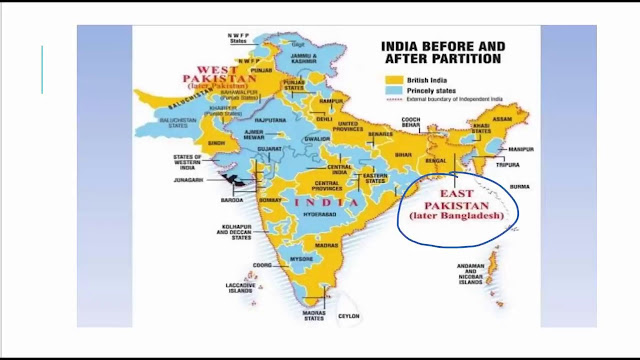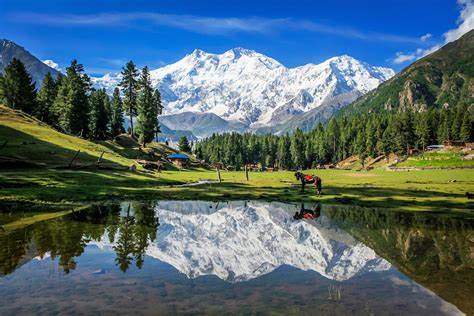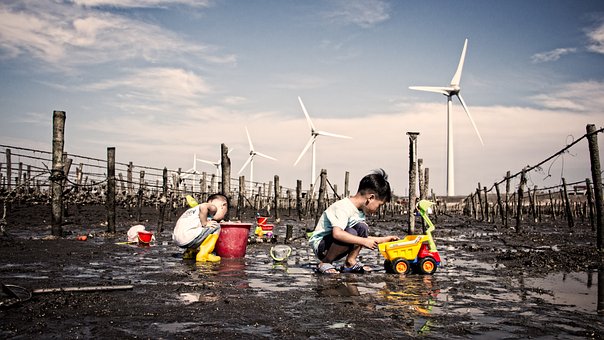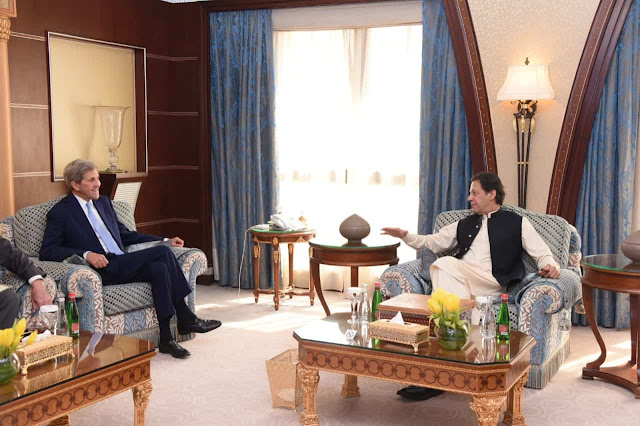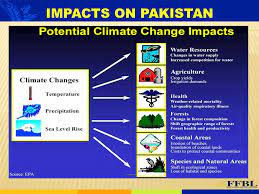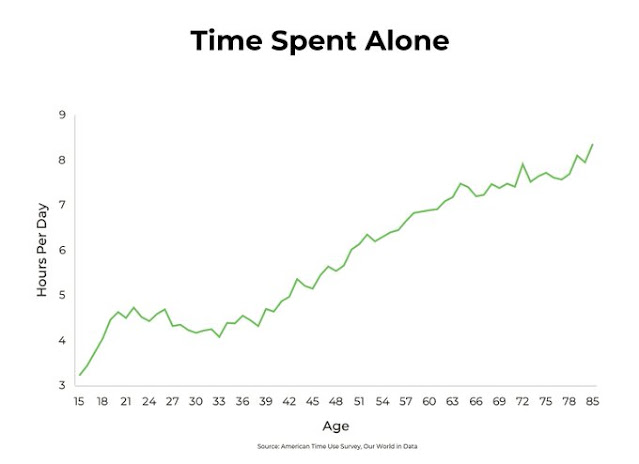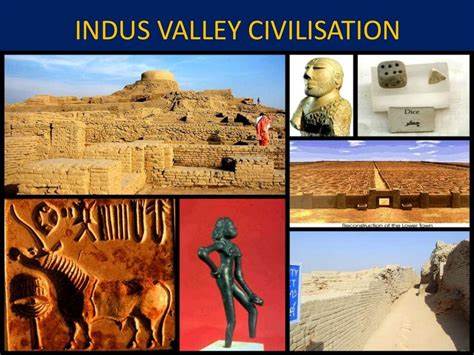
Throughout history, the territory inside the borders of Pakistan witnessed large civilizations, war developments, different religions and diverse reforms. In this blog, we will advance rapidly through some important events that appeared in this region. Unfortunately, we are not taught the ancient history of our beloved homeland. But the nations survive and flourish when they preserve their history, learn from their past, and keep their heritages preserved for the coming generations. Modern humans are thought to have arrived in Pakistan between the 73rd and 55th years ago. They settled life and farming in pastorals started around 7000 BC. People worked in agriculture and domestication of animals like goats, sheep or cattle by 4500 BC. Settled life had become more widespread and evolved into the Indus Valley Civilisation. One of the earliest civilisations, Indus Valley Civilisation, as well as ancient Egypt or Mesopotamia, were noted for developing new techniques and handicraft metallurgy development. It’s believed to be the first civilization to use wheeled transport in the form of bullock carts. It also used boats. The route that traversed the Indus Valley linking Central Asia, the Indian subcontinent, and the Orient, attracted people from far places at the beginning of the second millennium BC. Climate change with persistent droughts led to the abandonment of the urban centres of the Indus Valley Civilisation. Its population resettled in smaller villages and mixed with Indo-Aryan tribes who moved into other areas of the Indian subcontinent in several waves of migration, also driven by the effects of this climate change. During the Vedic period, 1500 to 500 BC, as Indo-Aryans migrated and settled into the Indus Valley, along with them came their distinctive religious traditions and practices, which fused with local culture.

The initial early Vedic culture was a tribal pastoral society centred in the Indus Valley of what is today Pakistan. During this period, the Vettes, the oldest scriptures of Hinduism, were composed. Vedic tribes remained in the Indus Valley by six century BC. These tribes fought against one another and were vulnerable to possible outsiders or invasions. King Darius, the first of the Achaemenid Empire, took advantage of the opportunity and planned for an invasion. The Indus Valley was a major off- for the Persian Empire and other earlier incursions and campaigns existed in the Indus River in 518 BC. Darius led his army through the Khyber Pass, eventually reaching the Arabian Sea coasts in sinned by 516 BC. Under Persian rule, a centralised administration system; with a bureaucratic system; was introduced into the Indus Valley. For the first time, provinces or satrapy were established with provincial capitals also. There is no archaeological evidence of prominent control over these regions. Not a single archaeological site that can be positively identified with the Achaemenid Empire has been found anywhere in Pakistan. We know about the easternmost satraps and the borderlands of through Achaemenid Empire are set in Daria contributions and from Greek sources.

In 328 BC, Alexander the Great that time King of Macedonia, king of Persia and Pharaoh of Egypt, had conquered much of the former satraps in the Achaemenid Empire up to Bactria. When Alexander died in 323 BC, he left behind an expansive empire stretching from Greece to the Indus River. The Empire was put under the authority of Perdiccas, and the territories were divided among Alexander’s generals. Due to the internal conflicts of Alexander’s generals, Chandragupta and his Brahmin councillor Chanakya saw an opportunity to expand the Mauryan Empire. From its Ganges plain heartland in Bihar towards the Indus Valley between 325 BC to 303 BC. Mauryan Empire incorporated today’s Pakistan and far beyond in today’s Afghanistan. It collapsed around 180 BC, and the Shunga Empire started to exist but not near the Indus Valley. Alexander’s campaigns, many Greeks established in this part of the Empire creating communities and influencing the region with their culture. The Indo-Greek kingdom expanded beyond the Hindukush. Their territories covered modern Afghanistan and extended to the Punjab region with many tributaries to the south and east. The Greek and Indian languages, culture and traditions mix, creating a very interesting period for this land. Sokka’s migrated from southern central Asia into Pakistan from the middle of the second century BC to the 1st century BC. They replaced the Indo-Greeks. Indo-Parthian and cushion empires ruled the lands here in the 1st century. By the end of the 3rd century, the Sassanids Shansha Shakur the first had incorporated the Indo-Iranian Borderlands into the Sassanid kingdom. The Gupta Empire was an ancient Indian Empire, existing approximately from 320 to 600 and covered much of northern South Asia, including some parts of modern Pakistan. Having its border with the Sassanid Empire in the Indus Valley across the Indus River, this period is important.
Great accomplishments and great cultural developments took place during the reigns of important leaders. As an example, we can give literary epics such as Mahabharata and Ramayana. This structure collapsed due to internal and external factors like loss of territories, invasions and instability. The Indo heft Lights were a nomadic confederation in Central Asia during the late antiquity period. They were defeated by an alliance of Indian rulers. The Brahmin dynasty existed in the region of Sind between 632 and around 724. In this territory, there were many other small states in the next centuries.

Another important period of this land is the expansion of the Arab caliphs. It was a large expansion that happened in the 7th century. After conquering the Middle East and the Sassanid Empire, Arab Forces reached the Indus Valley. Muhammad bin Qasim conquered most of the Indus region for the Umayyad Empire. During the time of Arab caliphs, it was a gradual conversion to Islam which happened as the new religion spread more and more. Also, Arabic and Persian languages spread and influenced the region. Ghaznavid Empire and then the Ghurid Empire ruled for centuries; over the Indus Valley and beyond. By doing so, the new culture and religion were embraced by more and more people becoming dominant over time. The Delhi Empire was a Sultanate based in Delhi that stretched over large parts of India. Ruling over the largest rivers here and also deep in India’s territory, this Sultanate was ruled by five Dynasties, the Mamluk Dynasty (1206-1290), Khalji Dynasty (1290-1320), Tughlaq Dynasty (1320-1414), Sayyid Dynasty (1414-1451), and Lodi Dynasty (1451-1526). During and in the Delhi Sultanate, the emergence of the Hindi Urdu language started to happen. There was a synthesis of Indian civilization and Islamic civilization. The further integration of the Indian subcontinent with the growing world system and wider international networks spending large parts of Afro-Eurasia put a significant impact on Indian culture and society. Mongols attacked the region between the 13th and 14th centuries. Temur invaded the Punjab region and sacked cities at the end of the 14th century. The first battle of Panipat was fought between the invading forces of Babur and the Lodi kingdom. It took place in North India and marked the beginning of the Mughal Empire at the end of the Delhi Sultanate. This was one of the earliest battles involving gunpowder firearms and field artillery in the Indian subcontinent which were induced by the Mughals in this battle. The early modern period started with the Mughal Empire. Mughal rule was briefly interrupted by the Sur Empire. The religion of Sikhism originated during this era in the Punjab province of Pakistan. Mughal rule was a time of economic development, prosperity and peace for Pakistan which remained for nearly two centuries and also the golden age of the region. They were responsible for spreading ordeal and built many masjids, mausoleums, madrasahs and forts in Pakistan. The period was marked by economic activity excellence in painting and magnificent architecture. The Mughal dynasty greatly influenced the art, architecture, and culture of today’s Pakistan. During the decline of the Mughals in the late 18th and early 19th centuries, the other dynasties invaded and controlled the region. Over these lands ruled the Durrani Empire, the Marathas, and the Sikh Empire. Most of the territory of modern Pakistan was occupied by the East India Company of the British Empire.

A series of conflicts followed in the region in which the British fought local rulers, Sikhs and Afghans. Pakistan became part of British rule later than other parts of South Asia, and it stayed this way until the 14th of August 1947. When Pakistan gained independence, the two provinces of British India Punjab and Bengal were divided along religious lines. Violence and conflicts existed between the Hindus, Sikhs and Muslims, and millions migrated to the new borders and exchanged populations. The dispute over Kashmir escalated into the first war between India and Pakistan. The constitution in 1956 led to Pakistan declaring itself an Islamic Republic with the adoption of a parliamentary democratic system of government. Another conflict with India happened that took place between April 1965 and September 1965.

(The information and related images are collected from different references available in Britannica Encyclopedia).

